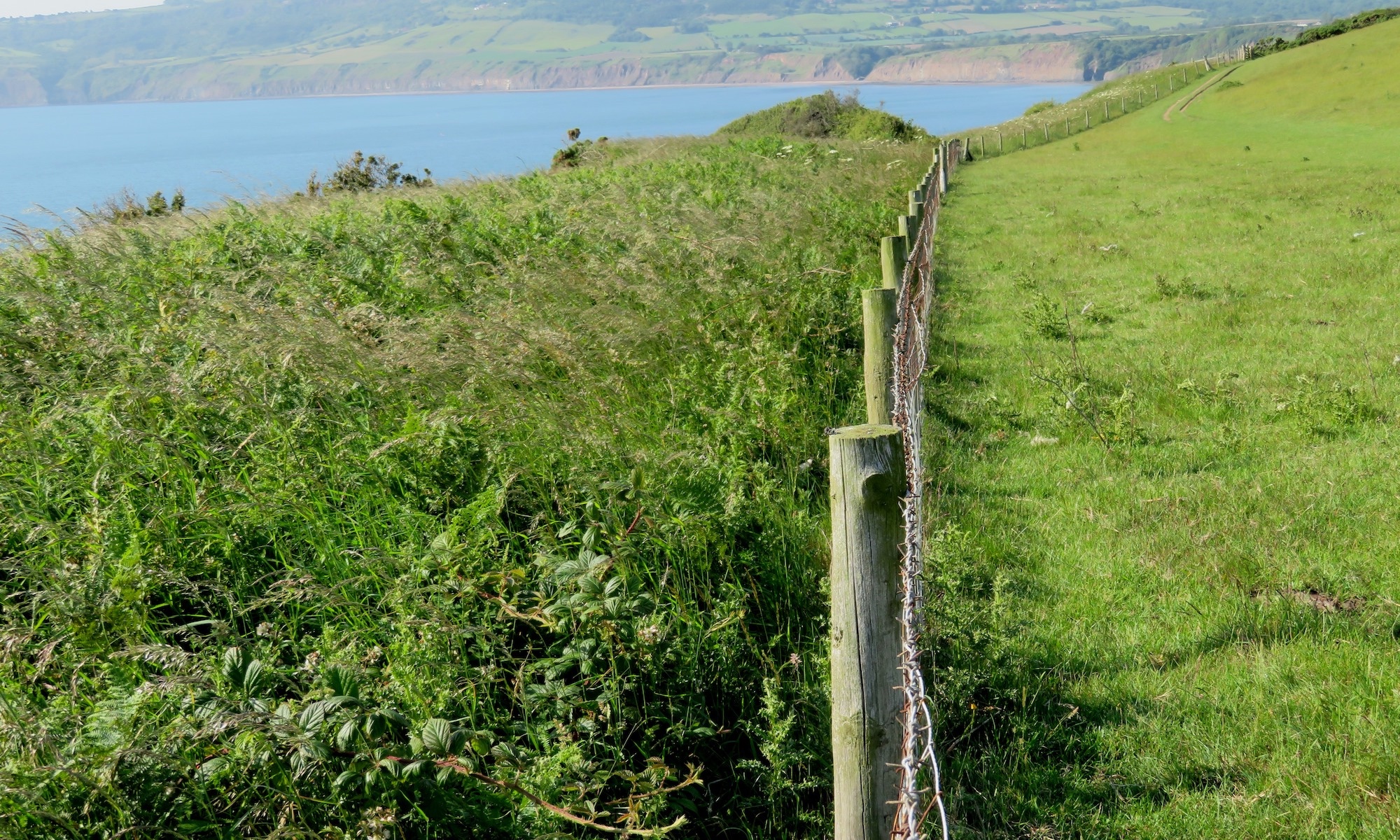by Kate Graham.
22nd November, 2022
I’m amazed. We are looking out over a delightful garden, full of flowers, chickens, shrubs and enormous vegetables, with a stream running gently down through a central rock garden. Birds flutter around the feeder, and a sparrowhawk is a regular visitor. My first impression is that my hosts, Judith and Frances, are people who really know about gardening, and have a serious capacity to get things done.
We aren’t here to see the garden though, but the fields above it, on the clay slopes that rise up gently above the village. They bought the house with some land seven years ago, and then in 2017 the neighbouring farmer went bankrupt and they were able to buy the adjoining fields. They now have 11 acres of land, and have planted 4,000 trees, with help from Nidderdale AONB and the Yorkshire Dales Millennium Trust, to cover planting and fencing costs.
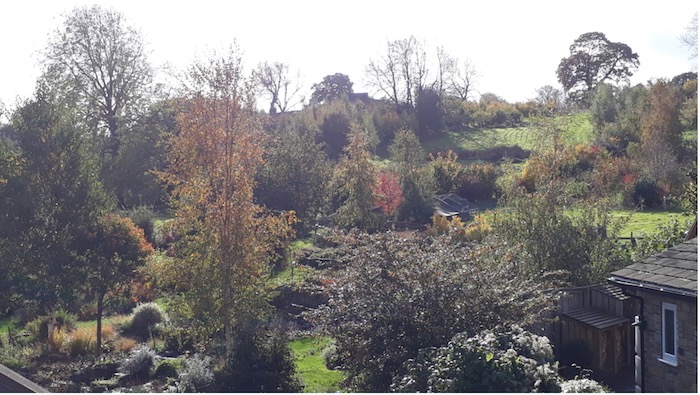
Their primary aim has been to improve biodiversity and to create links between the existing patches of woodland for wildlife corridors. Some of the land is well watered by the springs that rise on the slope, but other parts of the holding are very dry. They have created a scrape in one field that has become a magnet for wildlife and pond flora and fauna, particularly increasing insects: dragon flies in huge numbers (less this year, but many last year), pond skaters, damsel flies, breeding frogs and an enthusiastic range of birds to eat them. They have built a hide so they can watch what is going on, and a camera to capture the many herons’ nocturnal fishing and the delightful sight of three hares hanging out, washing, practicing boxing and then having a sleep.
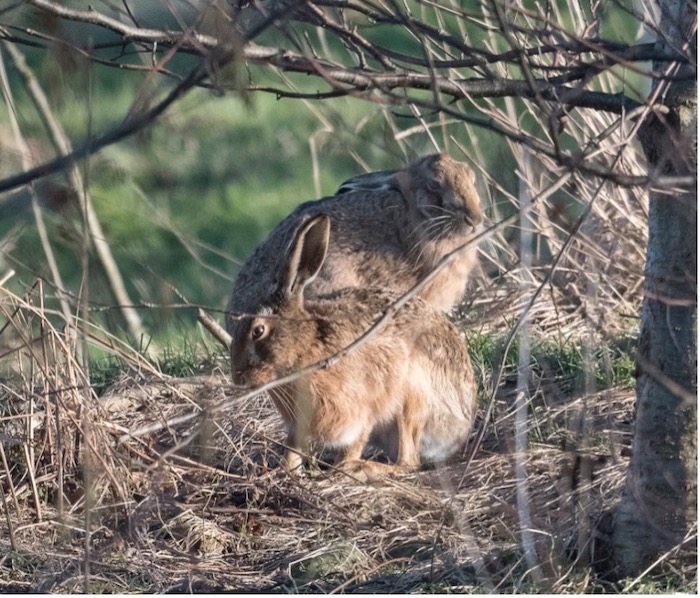
The trees in some areas have grown spectacularly well, with some young oaks already towering above me, as well as the rapid growing birches. They have planted a mix of more shrubby trees, such as rowan, hazel, spindle and guelder rose. On the steeper slopes many are still at waist height. As we walk around the sun starts to emerge, highlighting the rich colours of the berries, and the ripening hazelnuts.
Judith and Frances have been most delighted by the increased number and diversity of birds: as enthusiastic birdwatchers they log their sightings and can track the changes. There is a sense of abundance – at one point there were a flock of 60 goldfinches, and there have also been many more siskins, whitethroats, tree sparrows, and yellow hammers venturing into their fields. Raptors were already established when they arrived: a barn owl nesting in the barn, buzzards, hawks, kestrels and more recently kites flying over.
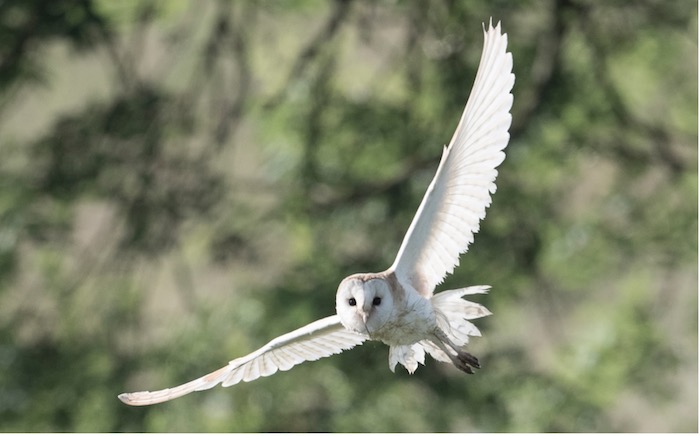
Their biggest challenges are the creeping thistles and the great curtains of goose grass, and where the line of intervention falls with these. When they left a line of thistles by a hedge, it quickly marched across the field, so they removed a lot of it. Their successful scrape is a second attempt at a water feature – the first was too deep and didn’t attract any of the life that they hoped for, apart from a few ducks. That one is now largely filled in, with water only visible after heavy rain.
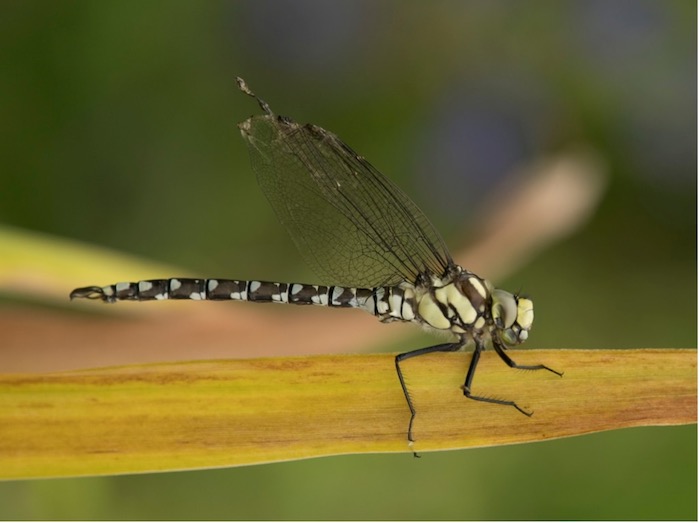
Judith told me how they have both needed to learn new skills, and in particular, to really observe, and feel much more deeply connected to the land, noticing how nature reacts to what they do. Surprises have included a wasp’s nest the size of a bucket, the joyful hares, the constant hum of activity in the fields, and wonderful numbers of bumblebees.
They have spent several years encouraging a wildflower meadow, and this is slowly developing, with copious amounts of yellow rattle:
“Quite what comes up is very unpredictable, and we are helping this along by planting some perennial wildflowers,“ Judith explains. “We collect seed each autumn and now have a wildflower nursery. We’ve also planted stands of hazel for coppicing to provide wands for the garden, so some areas are more structured than others.”
The challenge they face now is how to manage the woodland. The trees have grown surprisingly fast, and probably need thinning in some way, either by felling, coppicing, or possibly by having large grazers, such as Belted Galloway cows, to cause some rather more random destruction.
“Our main questions are about intervention – how much can we just leave, and what will happen if we do? We’ve been happy to see the hedges widen, but less happy to have them towering overhead, removing light and any view. What would happen eventually if we just left the thistles, without some form of intervention?” queries Frances. “In a truly natural setting there would be large animals to break up or eat some of these things, so in their absence, it does seem as if it is down to us.”
Their observations have lead to questions, such as why one hedge seems to attract large numbers of birds, whilst other, apparently similar ones, are empty. They have help from a local naturalist, but feel they’ve reached the limits of their current knowledge. I mention that I hope joining the network and sharing their learning with other people engaged in similar ventures will help to answer some of these questions.
In terms of the views of neighbours and the impact on the village, Judith tells me there was some questioning at first, but that now people are enjoying it. A footpath runs through part of the land that has been planted with trees, and regular walkers comment on how delightful it is, and how there is always so much to see.
